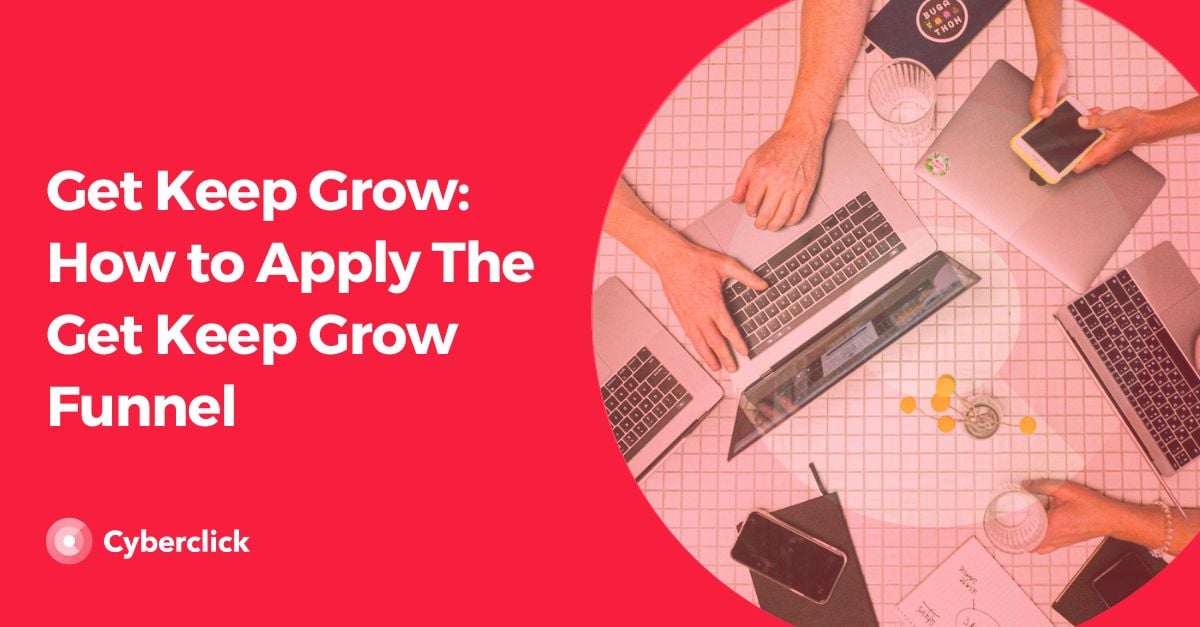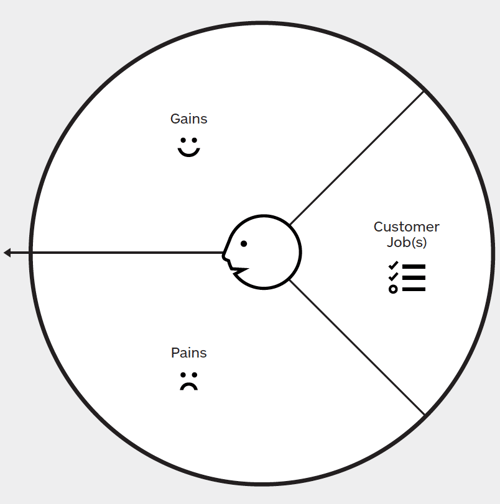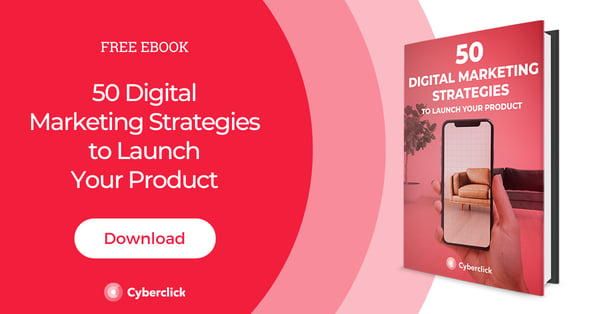By David Tomas, on 3 November 2023
80% of new leads never translate into sales. Moreover, companies that excel at lead nurturing generate 50% more SQLs (sales qualified leads) at a 33% lower cost. To get, keep, and grow customers, it takes a holistic analysis of your product-market fit, customer relations, and customer channels.
In this article, we'll dive into each of these marketing actions and explain how you can begin to get, keep, and grow customers.
Index
- Customer Context
- Multiple Customer Segments
- Channels
- The Pros and Cons of 6 Web and Mobile Channels
- Customer Relationships
- Get
- Keep
- Grow
Basic Building Blocks
Let’s begin with Alex Osterwalder’s Business Model Canvas, which is used globally to describe, design, challenge, and pivot your business model.
For marketers, the most relevant section spans from value proposition to customer segments and includes everything in between. This article will touch on all 4 components (value propositions, customer segments, channels, and customer relationships) and explain how the get-keep-grow funnel can be applied to each.
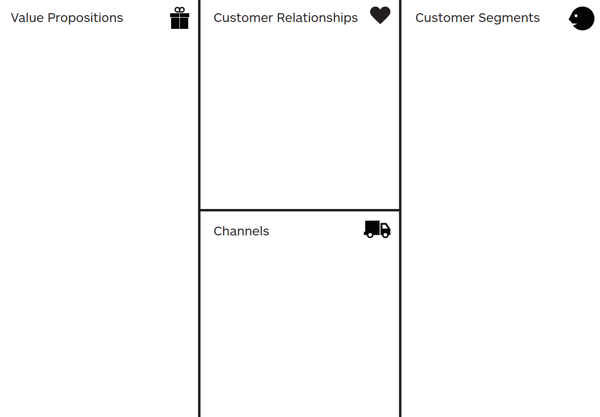
source: strategyzer
Value Proposition
Before diving straight into the customer journey, it's important to ensure that you are clear on your product's value proposition. Albert Einstein once said, “If I had an hour to solve a problem, I'd spend 55 minutes thinking about the problem and 5 minutes thinking about solutions.”
Do you have a solid understanding of your customer's problem? Is it clear how your product or service can be a solution for your customers? Determine if your product or service is a gain creator or a pain reliever. The following questions will help you better understand your product's value proposition and, therefore, help you understand the customer journey.
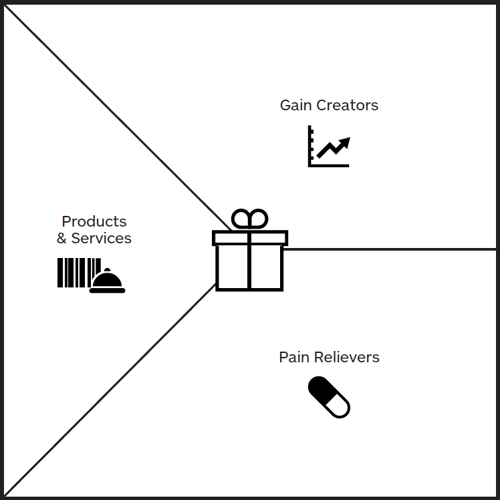
Source: Strategyzer
Pain Reliever Questions
What will your products or service reduce or eliminate? Wasted time? Costs? Negative emotions? Risks? Answer this: Do you help customers save money? Do customers feel better using your services? If so, how? Are you fixing subpar solutions that already exist? Do you eliminate risk for your customer?
How do your "painkillers" rank? On a list of your customers' top concerns, is your product or service solving pain point #1 or #50? Most human beings only tend to worry about their top 3-5 problems. When identifying your product as a pain reliever, put it in the context of other pain points customers have. Do you understand the intensity and frequency of your customer's problem? How important are the pain relievers you are providing in the list of overall customer needs?
Gain Creator Questions
What makes your customer happy? Saving time? Saving money? Less effort? Better outcomes? Delight? Answer this: Does your offering exceed current solutions? How does your offering make the customer's job or life easier? Are there further positive consequences created by your offering?
How do you gain a creator's rank? Do you know how each of your products or services creates gains? How do these gains rank according to the customer?
Having answers to these questions will allow you to step into your prospective customer's shoes better and understand why they would choose your brand.
Customer Segments
Customer segments allow you to better understand your buyer persona. Remember, customers don't exist to buy from you. You exist for them. Understanding the customer segments requires thinking about who your customers are and why they would buy from you.
Figuring out your niche and understanding why you are the best fit to serve this specific niche makes it extremely easy to promote and sell your products or services. Developing a buyer persona is a way to understand the details of who your customers are geographically, socially, demographically, etc. It is the basis for understanding your customer's pains and gains. Make sure all buyer persona data is validated and tested with real human interaction and customer engagement.
Source: Strategyzer
Customer Gain Questions
What benefits and outcomes do they expect, and what would go beyond their expectations? What do your customers value? Quality? Features? Performance? What positive outcomes do they desire?
What would make your customers' lives or jobs easier? What type of solution are they looking for? Cost? Quality? Design? More services? A flatter learning curve? Lower cost of ownership?
Customer Pain Questions
- What’s keeping your customer awake at night? In other words, what are your customers' main difficulties and challenges? What causes them problems or stresses them out? How are existing offers failing to solve these issues? Is it a lack of features, performance, or availability?
What barriers exist for customers to adopt your product or service? Is it the upfront investment cost? Is the learning curve too steep? How resistant are they to change?
Keep in mind that you may have various customer segments. The types of marketing that attract each segment will be different, which is why this is crucial to understand. Also, the tactics you use to get customers will be different than the tactics you use to keep them and grow them. Only by understanding your buyer persona will you begin to understand which tactics you should use and when.
Customer Archetypes and 'Day in the Life' Diagram
To have a clear image of the customers you target, construct personas/archetypes that can be printed out and put on the wall. Visually representing your customer segments will ensure you know who to talk to to help you determine how to market to those customers and guide your hypothesis during business development.
The next step is a full 'Day in the Life' diagram. This diagram will include what a customer does throughout their day, like what they read, what products/services they use, where they go, etc. 'Day in the Life' diagrams generate customer empathy and ensure the customer remains the firm's focal point. The more you interact with your customers, the better you will understand this, and the more targeted your marketing communications will be.
As your business develops, go back and update your definition of who your customers are. Has the business evolved since the last customer evaluation? What new and relevant painkillers and gain creators have been added to your offerings? Do new offerings address the same archetype?
Customer Context
A customer archetype is really just a profile of your buyer persona. Key points include their position/title, age, sex, motivations, role models, and discretionary budget.
This last point, discretionary budget, deserves additional attention as this is frequently overlooked when understanding a customer. Sometimes, there is a difference between the person who uses your products/services and the person who actually pays for them. This is especially relevant for B2B, where the list of people involved in a purchase can include:
User
Influencer
Recommender
Decision maker
Economic buyer
Saboteurs (people whose jobs feel threatened by the service the seller is providing)
In B2B sales, insights into the archetypes of the players in the game are important when it comes to influencing the purchase decision.
An Example from HubSpot
HubSpot is marketing, sales, and CRM software for various businesses. Depending on the firm, there will be various players in the purchase decision for HubSpot software. These could include:
The user: Marketers who use Hubspot reports and analytics
The influencer: Marketers
The recommender: Business management
The decision-maker: CMO or CIO
The buyer: CFO
The saboteurs: Existing individuals or groups within the firm that reject change in fear of job loss
Customer Segments
Customer segments are not always as clear-cut as they seem. Customer segments can include various archetypes and different ‘Day in a Life’ diagrams and are multi-faceted. Let's take a look at Google, for example.
Google’s value proposition for users is a free search engine. However, this search engine requires a vast amount of resources in terms of software, developers, data centers, etc. So how is it possible that such a complex, costly, and resource-heavy product is provided for free? And, how is it that Google is still one of the most profitable businesses? The answer is a 2-sided customer segment market of ‘users’ and ‘payers’. Google’s customer segments include:
User: Anyone searching online
Payer: Advertisers
Google has been acquiring users whilst advertisers have been paying. For the customer, the value proposition is a free search engine. For the advertisers, the value proposition is Google Ads. The revenue module is different for users and payers.
The key learning point is that multiple customer segments require different value propositions. In this case, one segment cannot exist without the other. These effects are also known as positive cross-side network effects.
Channels
How do you want to get your product to your customers? Channels are how you get your product to your customers. We increasingly place emphasis on digital channels as opposed to physical ones. Multichannel distribution can be costly, time-consuming, and often inefficient. As a growing business, it’s difficult to afford multiple channels from day one. Therefore, it's important to know what your core channel is and what additional channels would be beneficial to expand into.
The Pros and Cons of Web and Mobile Channels
1. Dedicated Ecommerce
This means having your own website and distributing your products or services directly via this site.
Pro: Easy to create, complete control of price, presentation, and inventory.
Con: You bear all the challenges and costs of traffic-building and converting visitors into buyers.
2. Mobile App Commerce
This is a platform, such as an app store or Google Play, which is solely dedicated to application software.
Pro: Massive reach in a fast-growing distribution segment, explosive business opportunity.
Con: Costly intermediaries, file-size constraints, product presentation and payment challenges, and operational complexity.
3. Two-Step Distribution
This is a marketplace like Amazon that has a major web presence where you can sell both physical and virtual products.
Pro: It is a fast way to get national distribution at a variable cost with little upfront spending.
Con: Little control of on-site promotion or product visibility, except with some extra spending.
4. Aggregator
This is a website that takes a vertical market approach, such as Zappos.
Pro: It is a fast way to get national distribution at a variable cost.
Con: Hard to get visibility, on-site promotion and marketing can get very costly.
5. Social Commerce
This is where you sell predominantly through social media platforms such as Facebook, Twitter, LinkedIn, Google+, Youtube, Pinterest, Instagram, Snapchat, etc.
Pro: Fast, potentially viral distribution, great for product launches and awareness building.
Con: Platforms take 50% margin or more of sales. How do you go viral in the first place?
6. Flash Sales
This is a discount or promotion offered by an ecommerce store for a short period of time. An example of this is Groupon.
Main Pro: Fast and massive distribution.
Main Con: Painfully expensive, discounts up to 90%, and site costs.
Customer Relationships
Through thick and thin, healthy customer relationship management is essential in sustaining business performance and your competitive advantage. Customer relationship management can be broken down into 3 sections based on Steve Blank’s customer relationship funnel: get, keep, grow.
Get. How you acquire customers and get them to purchase products.
Keep. Keeping customers for long periods rather than losing customers you've spent time, money, and resources acquiring. It’s a lot more expensive to get customers than to keep and grow them.
Grow. Sell existing customers more products and gain more engagement.
To understand this, it is vital to refer back to the value proposition canvas (defining the problem you are solving) and your customer archetype.
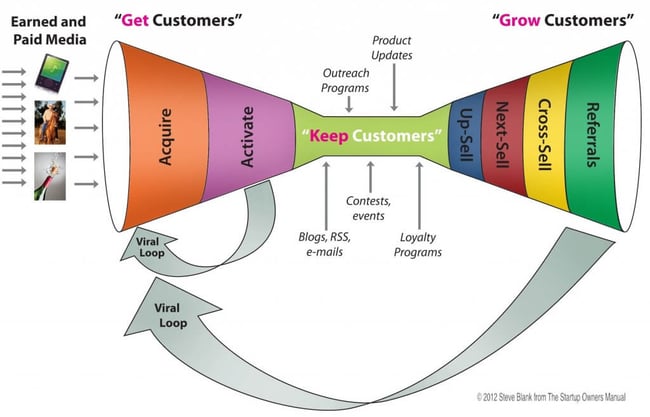
Source: Steve Blank
Get
Demand Creation Activities
Get is all about getting customers interested, and this is where the previous sections (value proposition, channels, and customer segments) come into play. In the above diagram, this is the left part going into the funnel representing all the demand creation activities designed to feed the sales funnel. Activities that attract customers into the funnel are known as demand creation activities. These can be further broken down into paid and earned.
Paid demand creation activities can include:
Public Relations
Advertising
Webinars
Emails
SEM & SEO (Google Ads, Facebook ads, etc.)
Your paid demand creation activities will depend highly on the type of content your target audience consumes. Content marketing strategies must consider if they are into blogs, news, podcasts, television, etc. For example, if you notice your customers rely heavily on blogs, you'll want to emphasize getting the correct keywords for your own blog and position banners and ads on blogs where you are most likely to find your customer. The key point here is to match your demand creation activities to what you know about your customers, especially if you are paying.
Earned demand creation activities can include:
Publications in journals
Conferences/speeches
Blogs
Guest blogs
Guest articles
Social media (Facebook, Twitter, LinkedIn, Instagram, etc.)
These are all activities that you can do for free that will get the attention of your customers and help drive them into your acquisition activities.
Acquire & Activate
Acquiring is getting customers to your site or app. This is strongly related to earned and paid media, which drive customers to find you online. To become active, customers can pay for something, sign up, or engage with the website or app.
For the revenue model, the most important metric is the customer acquisition cost (CAC). How much is it going to cost to acquire a customer, how do you activate a customer, and how much does it cost?
Key Points to Consider
Visits: You’re using Google Ads and are paying 30 cents per click. The campaign gets 5,000 people to visit your site. The total cost for visits is $1,500.
User Activation: Here, visits are not your goal. Your goal is to get customers to the end of the funnel. You want to get your customers in a position where they will make a purchase.
Freemium User Activation: Assume that just 10% of the customers acquired are activated and try out your "30-day trial period" and are now part of your freemium product scheme. So you’ve got 500 users on the freemium product, but the goal is to get customers to actually pay for it.
Paying User Activation: Assume 5% of activated freemium users actually end up paying for the full package. This means that you started with 5,000 user visits (at the cost of 1,500$). Then, you got 500 people who got a freemium version, and in the end, 25 are actually paying for the product.
CAC: Initially, 5,000 user visits for 1,500$ may look good given the .30 cent cost per click. That being said, you can see the actual CAC is €60 to acquire one paying customer.
Key Metric: The key metric to keep in mind in the GET section is customer acquisition cost, or CAC.
Keep
Keep is all about keeping customers engaged and keeping churn to a minimum. Key tools to implement here include:
Contests and events
Blogs/RSS/email
Social media
Grow
Grow is all about selling to existing customers. Remember that it is a lot cheaper to sell more to existing customers than it is to acquire new ones.
4 Things to Consider in Your Growth Strategy
Can you unbundle some of the packages? In other words, can you separate the product or service into parts with different prices? Most people just want the base product. Make use of this and put a premium on your premium features.
Can you up-sell the product? This is based on understanding your customer’s aspirations. Think about the quality and the features of a product and create an up-sell strategy specific to your customers' aspirations. How can you exceed their expectations?
Can you cross-sell your products? Are there any accessories or companion products that your customers can purchase?
How can you get satisfied customers to refer you? Happy customers are a great way to bring in new customers through word of mouth.
Lifetime Value
Customer lifetime value (LTV) is a key concept in customer relationships. To effectively calculate how much you can spend on customer acquisition, you need to understand the customer lifetime value. This refers to how much customers will purchase from you from the beginning to the end of the relationship. Customer LTV can be increased by reducing churn and growing sales with existing customers.
When you're considering your Get, Keep, Grow strategy, there is a balancing act between CAC and LTV. It’s about determining how much more lifetime value is than acquisition costs (CAC
How do you setup a sales funnel?
To set up a sales funnel, start by defining your goals and target audience. Create a clear path with stages like awareness, interest, decision, and action. Use landing pages, lead magnets, and follow-up emails to guide potential customers through each stage.
Are sales funnels outdated?
Sales funnels are not outdated. They’ve simply evolved. While buyer behavior has changed, funnels still provide a structured approach to guide prospects. Adjusting them to fit modern buyer journeys keeps them effective for driving conversions.
What are the most popular sales funnel builders?
When selecting a sales funnel builder, affordability and efficiency are key. Some of the more popular options on the market to automate this process are GetResponse and Systeme.io.
What is the formula for analyzing sales funnels?
While there's no single "formula," key metrics like conversion rates at each stage, average deal size, and sales cycle length help measure its effectiveness.

